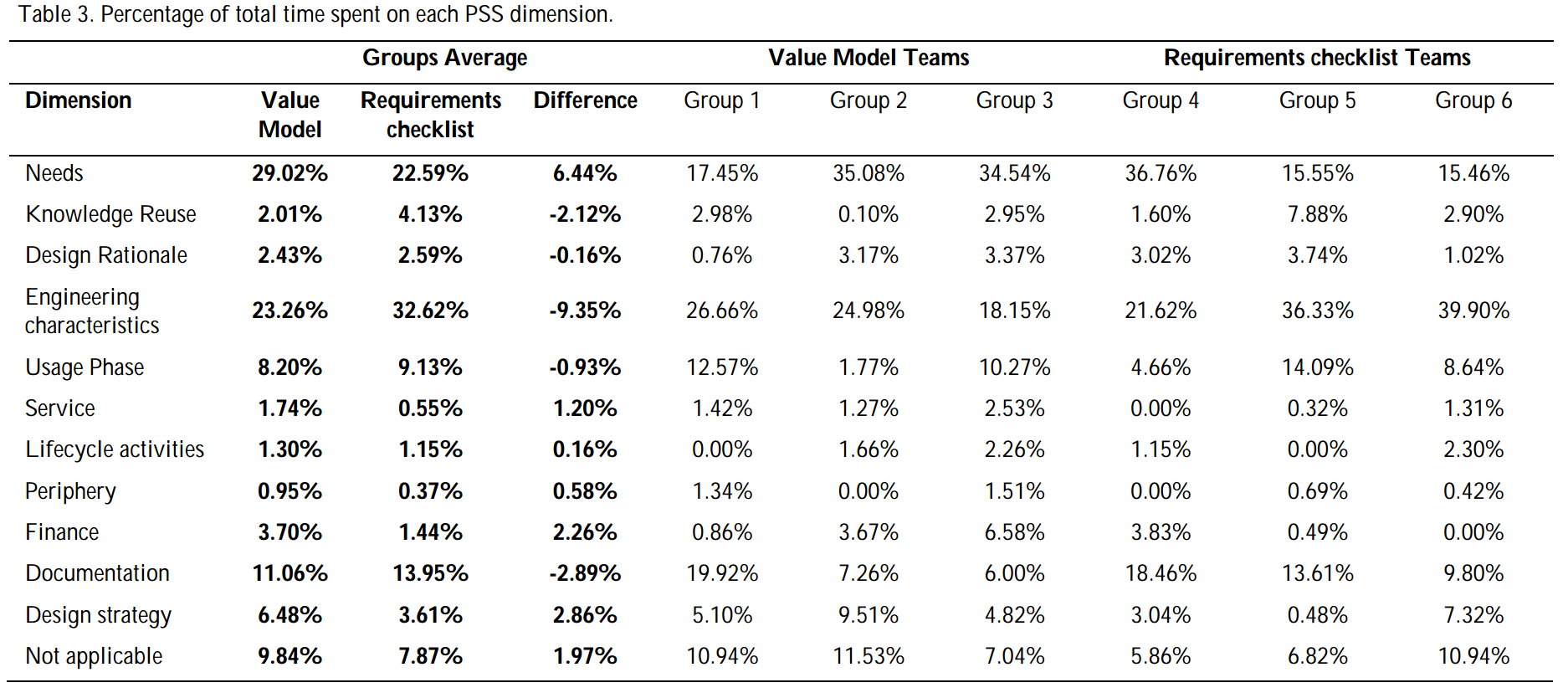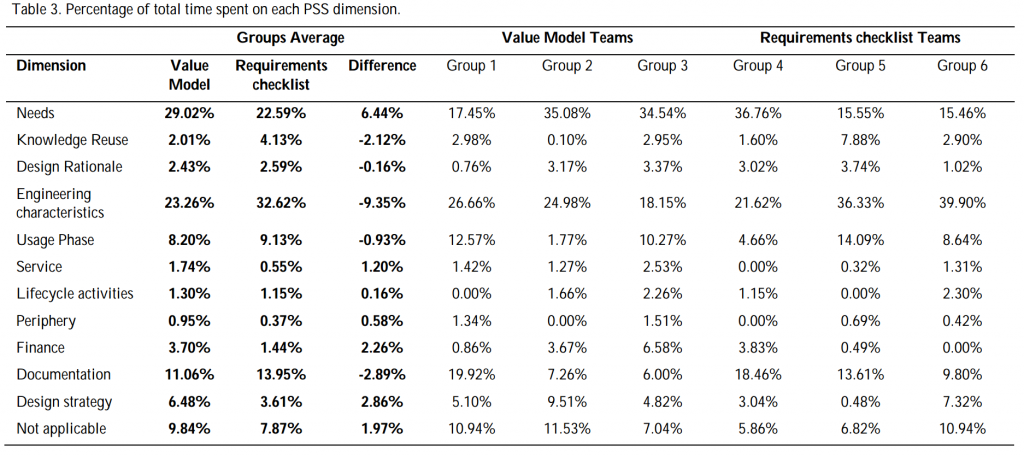
Experimenting the use of Value Models as Boundary Objects in Conceptual PSS Design
- Post by: Tobias Larsson
- 13th June 2016
- No Comment
ABSTRACT
The paper presents the results of experimental activities aiming at investigating the role of ‘value models’ as ‘boundary objects’ that facilitate cross-functional discussions in the PSS conceptual design phase. The experiment featured 6 separate sessions involving a total of 22 students in the final year of three different Master Programmes. In the sessions participants were asked to redesign an asphalt compactor and to use different types of design decision support for this task, namely value models vs. requirements checklists. The recordings from the experiment were analysed using protocol analysis to compare the behaviour of teams. The results confirm the hypothesis that, compared to traditional requirement checklists, value models emphasizes activities related to the clarification (1) of the problem domain and needs and (2) of the lifecycle aspects of a solution concept. Both results suggest that value models have the ability to facilitate cross-boundary discussion in the early phases of the PSS design process, and to act as boundary objects that provide a common platform for knowledge sharing within the cross-functional team.
KEYWORDS
model-based design; simulation; platform-based design; value
CITATION
Panarotto, Massimo, Marco Bertoni, Alessandro Bertoni. (2016). Experimenting the use of Value Models as Boundary Objects in Conceptual PSS Design. Procedia CIRP, Volume 47, 2016, Pages 370–375, Product-Service Systems across Life Cycle. http://dx.doi.org/10.1016/j.procir.2016.03.235.
DOWNLOAD
http://urn.kb.se/resolve?urn=urn:nbn:se:bth-11838

